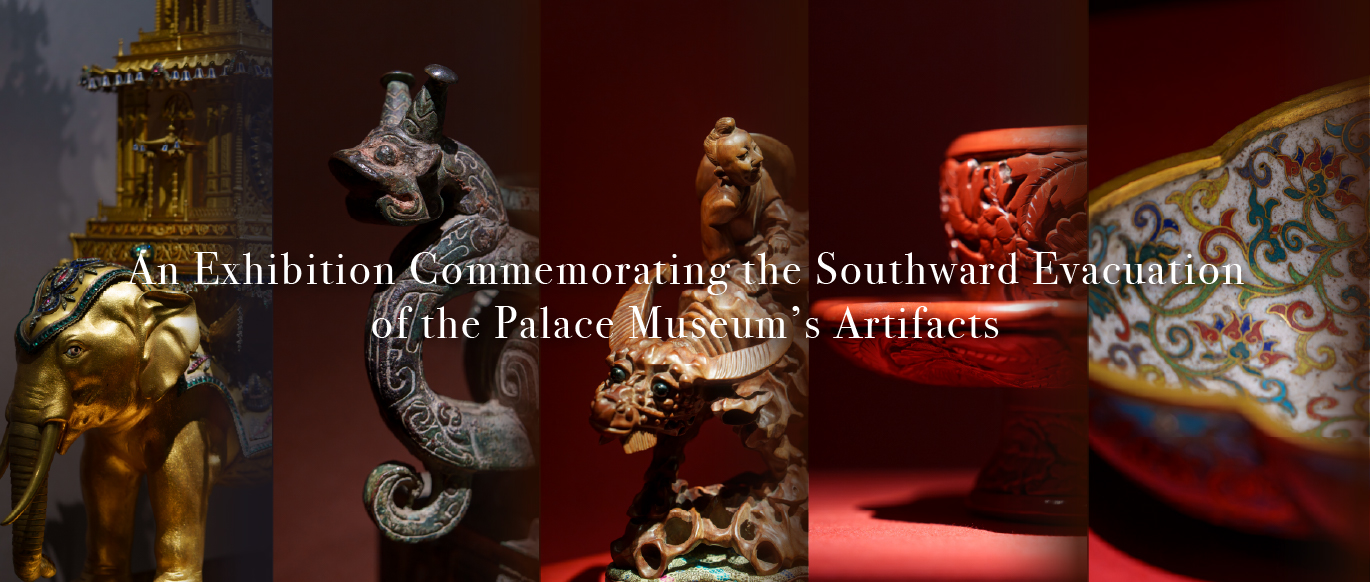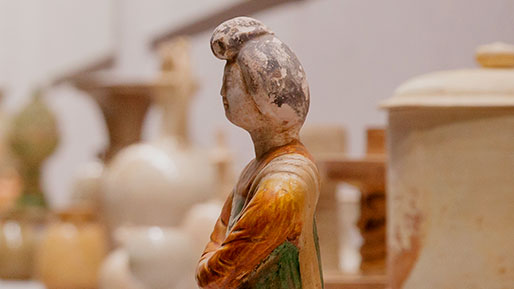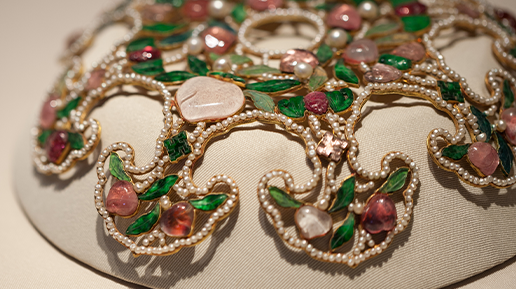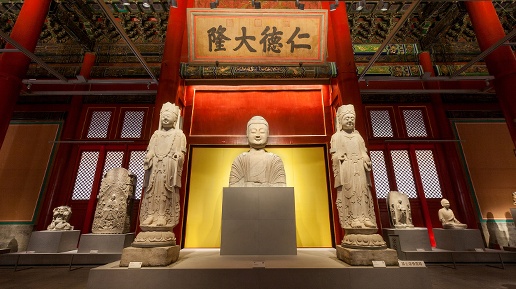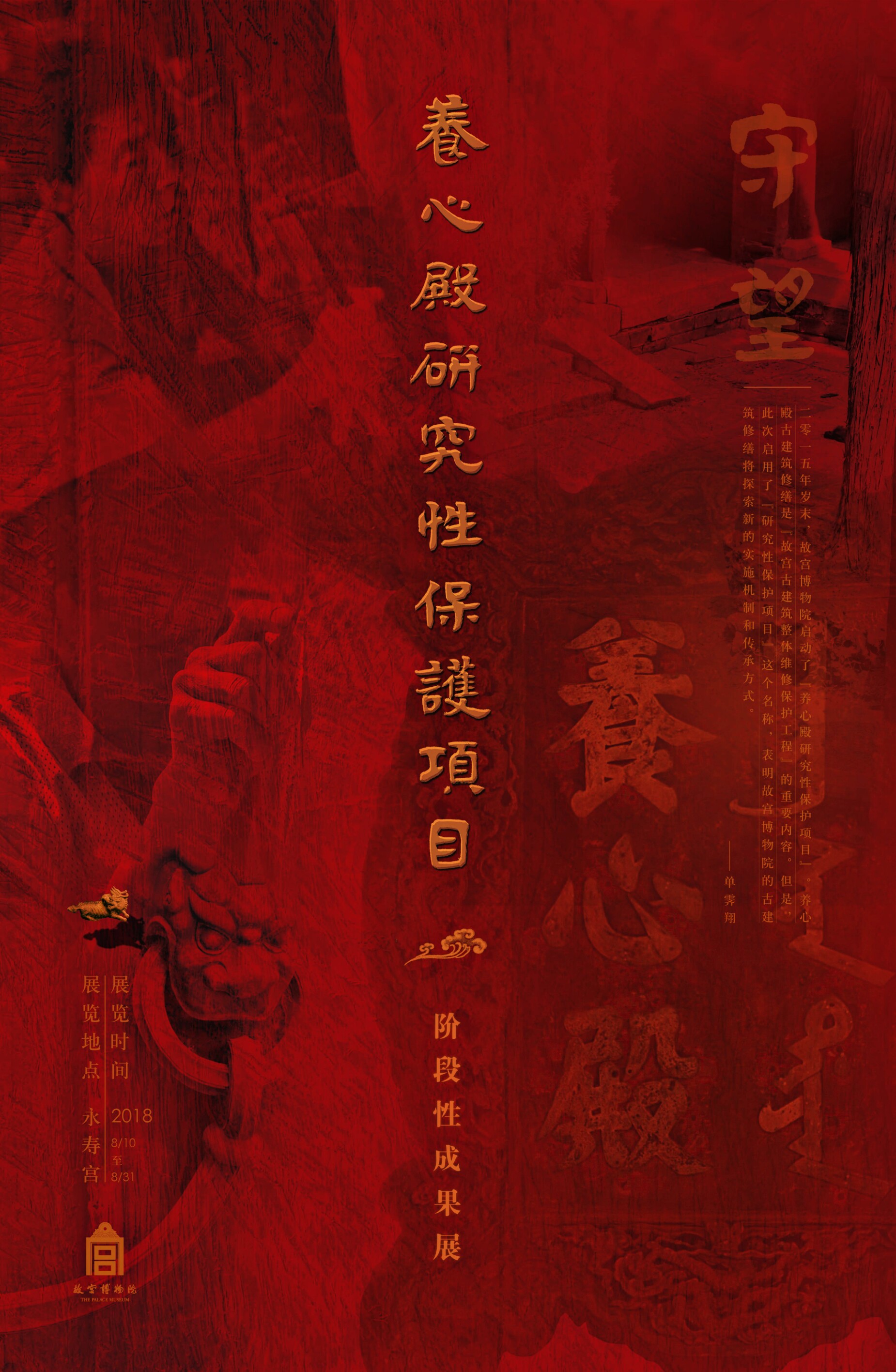
Introduction
In 2015, the Palace Museum officially began its first major research and conservation project on the Hall of Mental Cultivation (Yangxin dian). Called “The Hall of Mental Cultivation Research and Conservation Initiatives”, the project consists of a series of sub-projects to deepen scholarly understandings and ensure the long-lasting preservation of the heritage architecture and the cultural artifacts there contained. After over two years of research, the initiative is moving from the preparatory to the implementation phase. This exhibition showcases the achievements made throughout the initial phases of the project and describes how the researches and staff of the Palace Museum preserve heritage culture for transmission to future generations.
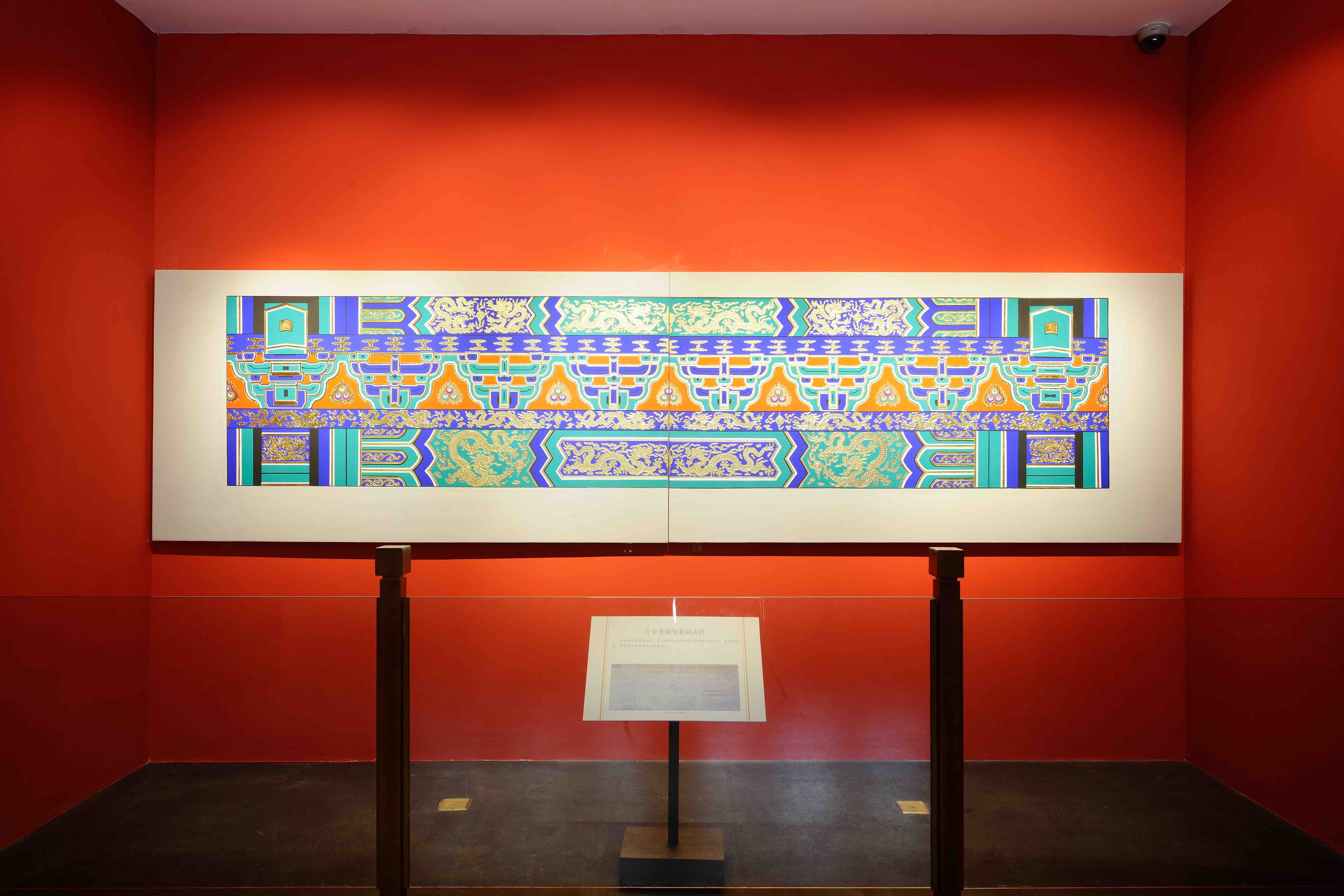
I. Guiding Research
The Palace Museum formally launched “The Hall of Mental Cultivation Research and Conservation Initiatives” on December 18, 2015. The project emphasizes academic research as the driving force and underlying support for the preservation of the historical complex known as the Hall of Mental Cultivation in the Forbidden City. At the end of 2015 and the beginning of 2016, the research team began their work, and, by August of 2016, the academic committee approved thirty-three sub-projects. These projects involve over 100 researchers, six of the Museum’s departments, and fields of research such as heritage architecture, history and culture, museum collections, and technology and restoration. Currently, each of these projects has begun in earnest, and some have already produced noteworthy results; they are all projected to be completed by 2020.
II. Enduring Culture
After the “Hall of Mental Cultivation Research and Conservation Initiatives” was launched, the researchers and staff in the Department of Palace Life and Imperial Ritual (Gongting bu) diligently applied themselves to undertake the research, management, and curation of the objects in the Hall of Mental Cultivation and have already reached an important stage in their work. As the project includes aspects of court life, religious practice, codes and regulations, and rites, music, and attire, researchers have examined quantities of archives and historical documents and have compiled hundreds of thousands of characters in research notes. From the Capital Museum in Beijing to the Hong Kong Heritage Museum and from the Nanjing Museum to the Shandong Museum, the travelling exhibition “Discovering the Hall of Mental Cultivation” has been immensely successful and highly acclaimed during the tour around the country. The touring exhibition and the current research projects are allowing objects that were formerly stored in the deep recesses of the palace to be seen by the general public and enjoyed for their cultural significance.
III. Protecting Treasures
Since 2016, the Department of Conservation Science (Wenbao keji bu) has been engaged in this project via fourteen sub-projects. One major aspect of their work is preventative conservation, which has involved pesticide fumigation throughout the 8,900 cubic-meter Hall of Mental Cultivation architectural complex; the measures also include humidity and temperature controls and steps to prevent pests and mold. Another major aspect of these efforts involves research into microbial damage to collection pieces. This work includes a general survey of potential damage and the conservation of almost 200 objects, including metal and wood objects, lacquers, works with inlays, thangka, woven textiles, room dividers, and divider-panels. The department’s researchers and staff combine modern technology with traditional craftsmanship. This integrated methodology will allow for the successful preservation of the Hall of Mental Cultivation for generations to come.
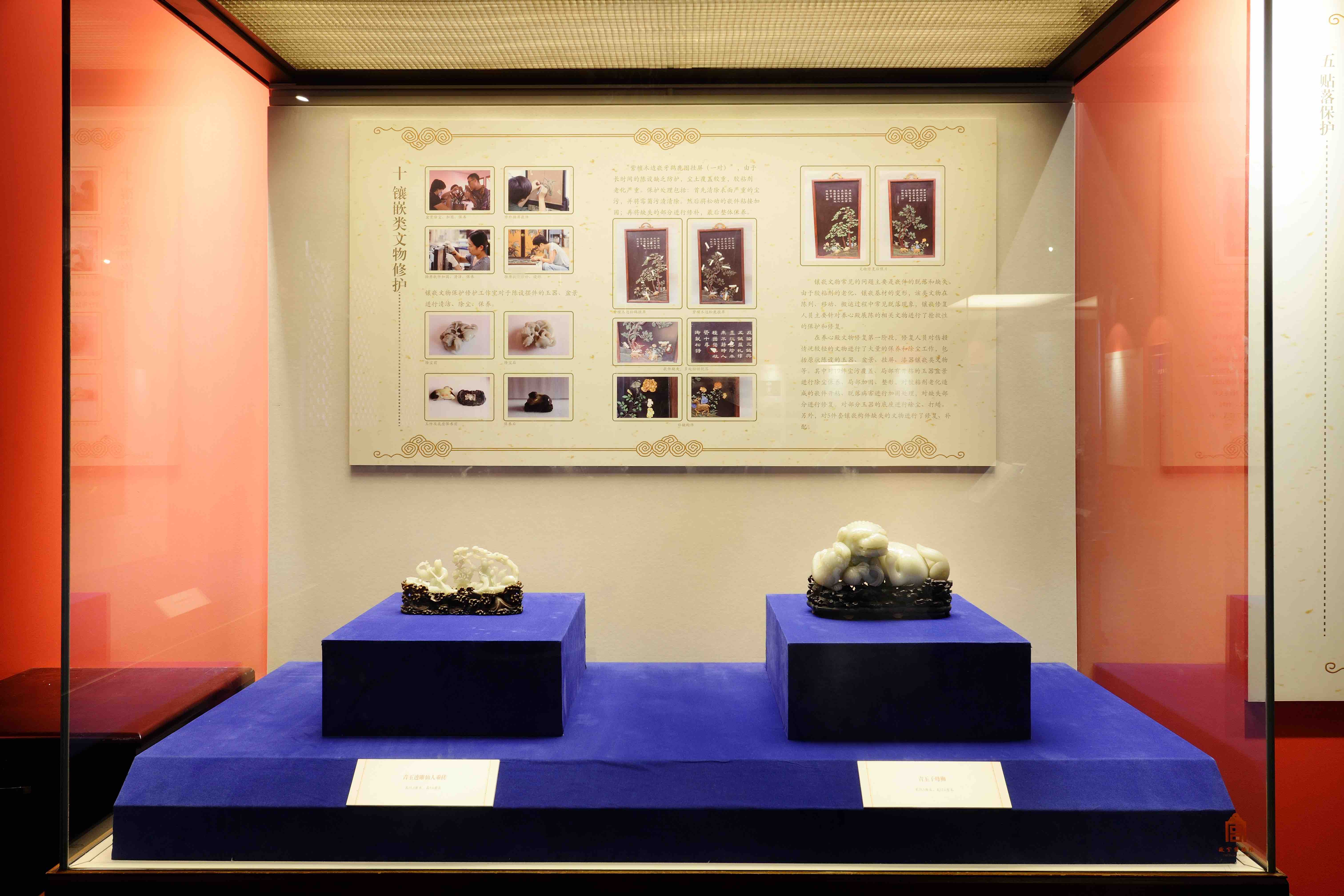
IV. Orderly Conservation
Since the end of 2015, the moveable objects in the Hall of Mental Cultivation have been successfully relocated. At the beginning of 2018, the Department of Heritage Architecture (Gujian bu) completed the planning for the conservation project and submitted proposals to the Department of Construction Management (Gongcheng guanli chu). Meanwhile, that department submitted design proposals and conducted preparations for the conservation project. Since May of this year (2018) when the State Administration of Cultural Heritage approved the proposals, the department began drafting inventories and price-lists for the project. Researchers and staff in the department have also been conducting field-surveys to identify relevant experts in Beijing, Hebei, Anhui, Nanjing, Shandong, Jiangsu, and other areas and to select the suppliers for the gold and other materials necessary for the project. Tentative standards for appraising the quality of the needed mulberry paper have been established, and a workshop that specializes in the nearly-lost art of bamboo paper production has been found. At present, the conservation project is moving beyond planning and entering the implementation phase.
V. Survey & Design
Since the outset of this project, the Department of Heritage Architecture has completed a record of the period-condition of the courtyard, collated notes on historical archives, investigated the current condition of the architecture, conducted experiments for on-site conservation, and drafted plans for implementation. Using the eight traditional-Chinese architectural craftsmanship categories (tile, wood, stone, scaffolding, rammed earth, lacquer, paint, and paper) as foundational categories, the research team has selected experts for the oversight of the tile roofing, timbre structure, walls, lacquer and paint, paper hanging, and exterior decoration; these experts have completed systematic documentation of their research. These efforts have resulted in almost a million characters of reports and over 3,000 blueprints. Having earned high praise from the State Administration of Cultural Heritage, this work will be instrumental in solving some of the remaining challenges in terms of comprehensive, systematic analysis and scientific research methodologies in the field of architectural preservation.
VI. Exquisite Craftsmanship
The craftsmen are the main force behind the preservation of cultural heritage and the continuation of traditional arts. Each sub-project requires qualified craftsmen and technically-trained workers to ensure the quality of the final product. In order to implement the project designs, the administrative team has organized training and examinations in traditional arts and craftsmanship. Over 200 people have completed elementary-level selection and training for skills related to working with tile, timber, lacquer, masonry, lacquer, and paper. For instance, the trainees learning about wood-working techniques completed a project on the interlocking-bracket eaves (dougong) of the Hall of Funerary Grace (Ling’en dian) at the Chang Tomb of the Thirteen Tombs. Meanwhile, the trainees focusing on painting techniques worked on the polychrome embellishments (hexi caihua) seen on the beams in palatial construction. These training courses and other formative programs will ensure standardization and the quality of the project as a whole.
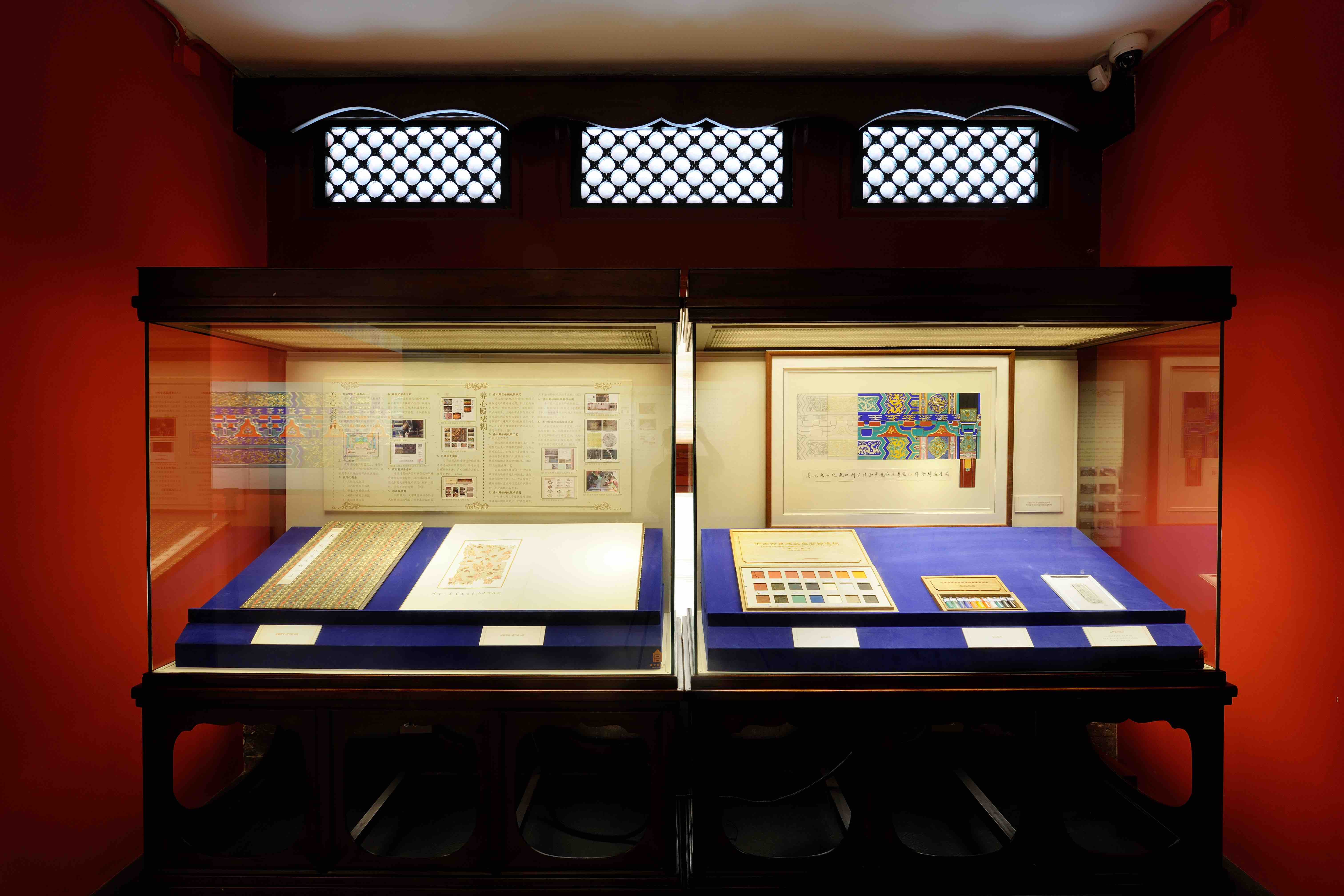
VII. Digital Exhibition
The Department of IT, Imaging, and Digital Media (Ziliao xinxi bu) has designed a range of presentations to showcase the Hall of Mental Cultivation and this conservation project. These digital offerings include documentation of every step in the conservation process, including the original period-décor of the hall, the process of relocating the artifacts to the Museum storehouses, architectural surveys and investigations, curating the digital exhibition, and the travelling exhibition of relocated artworks. The department is also responsible for a yearly edition of the documentary video-series Palace Diary (Gugong xinshi) to update the public on developments at the Museum and this project specifically. Additionally, the department’s offerings are showcased frequently at the Museum’s Digital Gallery atop the Gate of Correct Deportment (Duan men), which most recently has featured the interactive “Discovering the Hall of Mental Cultivation” digital exhibition that includes AI, VR, and a variety of multimedia presentations. These digital media bring the cultural artifacts to life and provide a diversity of means by which visitors at the Museum or travelling exhibitions can enjoy the history of the Forbidden City.
Translated and edited by Adam J. Ensign and Zhuang Ying






